目次
Craft Report
High-Quality Tawashi, Packed with the Skills of Artisans.
In Kinokawa City, Wakayama, a region rich in nature, Kitayama Masatsumu Shoten continues to handcraft high-quality shuro tawashi (palm fiber scrub brushes)—a tradition born in Japan about 100 years ago. Each one is carefully made by hand with devotion, by a craftsman with over 50 years of experience.
Depending on the use, raw materials such as pesticide-free palm (shuro), coconut, or sisal are selected. By paying attention not only to size and fiber density but also to the beauty of shape, brushes of the highest quality are created.
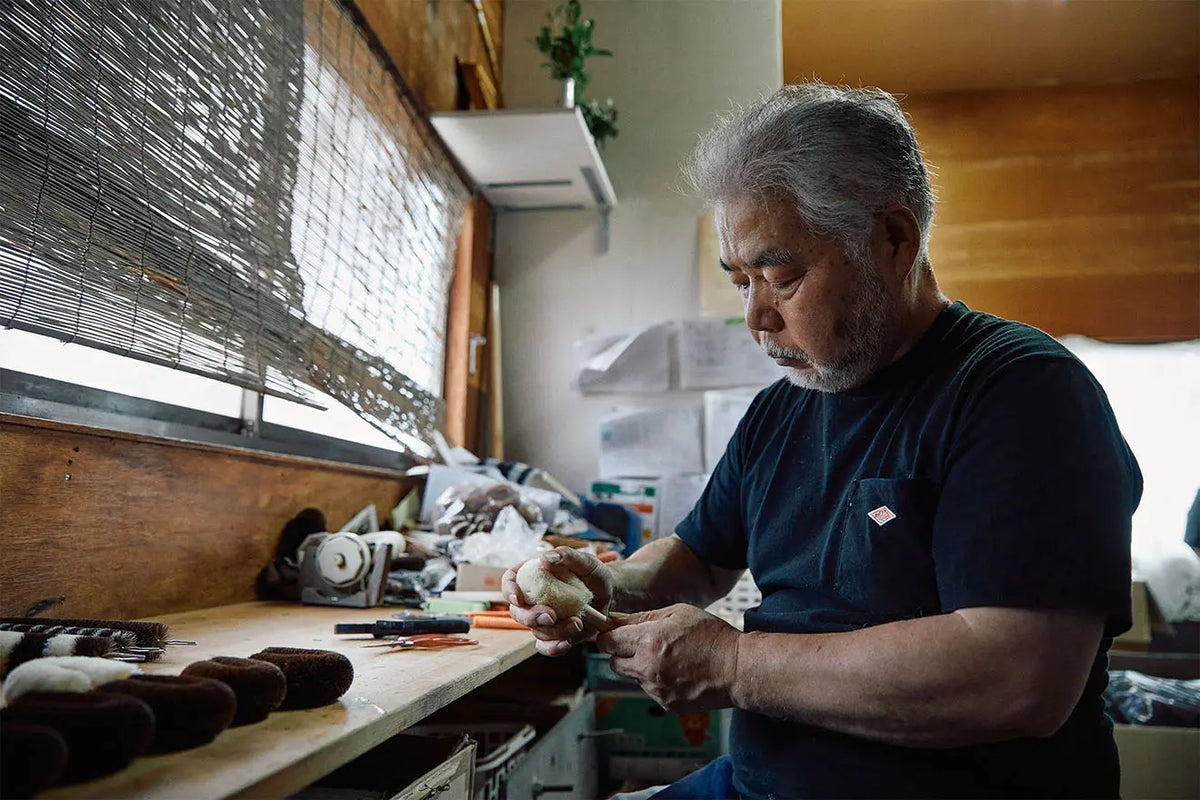
Craftsman Masatsumu Kitayama.
The raw materials used are pesticide-free palm, coconut, sisal, and other materials, all chosen according to their intended use, and the highest quality scrubbing brushes are produced by paying particular attention to the size, fiber density, and beautiful shape.
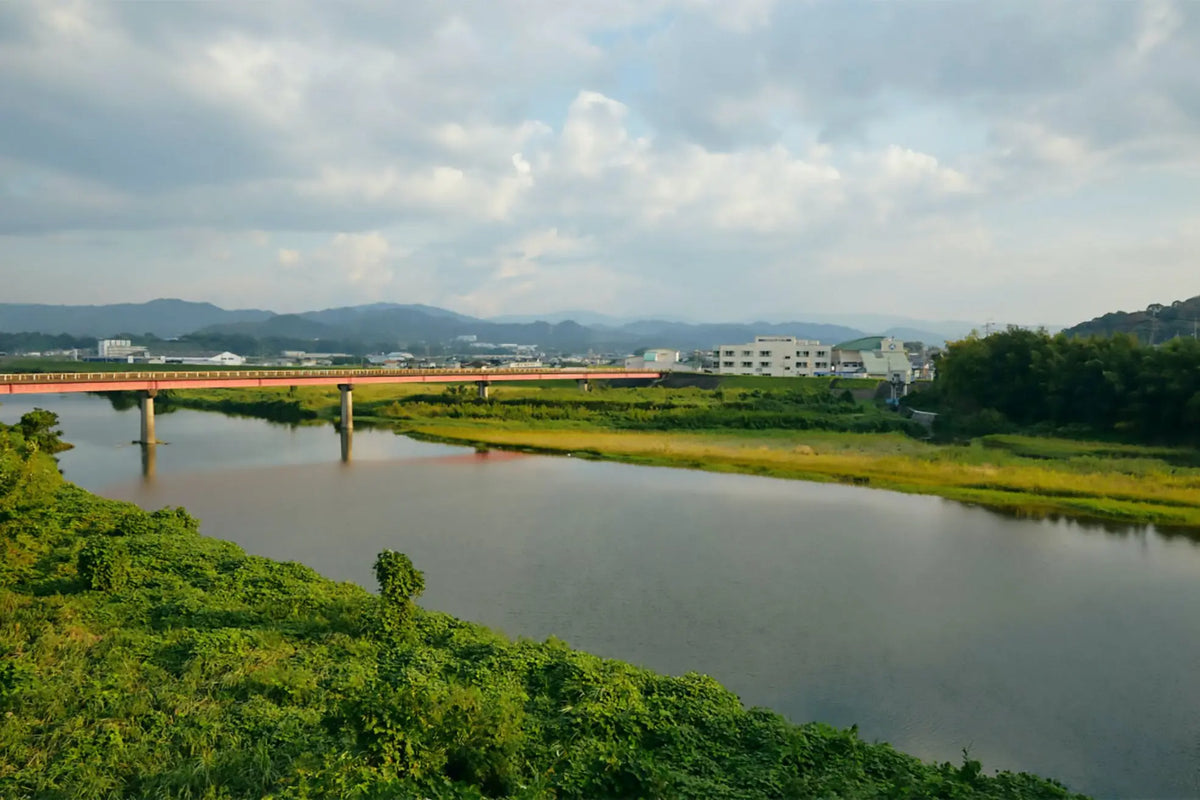
The Kishi River, a Class A river, flows near the workshop.
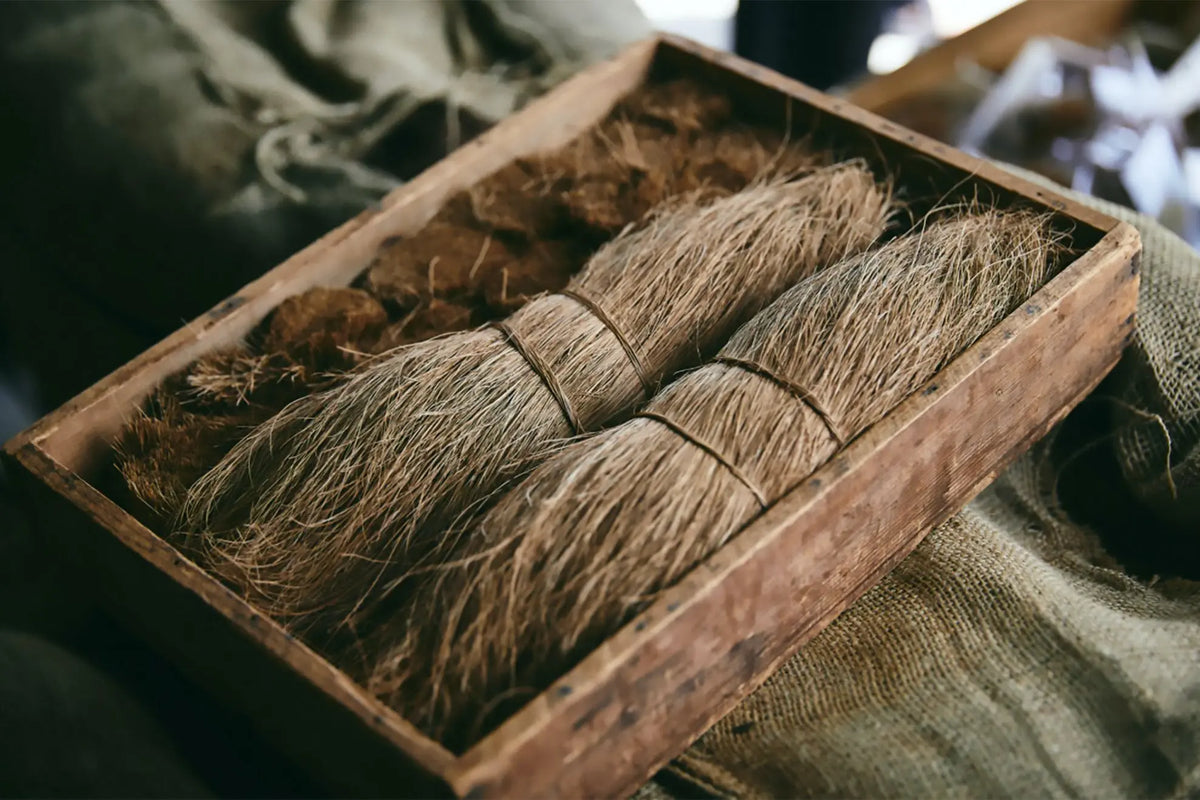
Palm fibers before processing.
The foundation of tawashi-making is a process called bō-maki (“rod wrapping”), in which fibers are tightly packed at high density and wrapped evenly into a cylindrical shape. The strength of the wrapping and the balance rely entirely on the craftsman’s fingertips and sense—this is where the artisan’s skill, impossible for machines to imitate, is most concentrated.
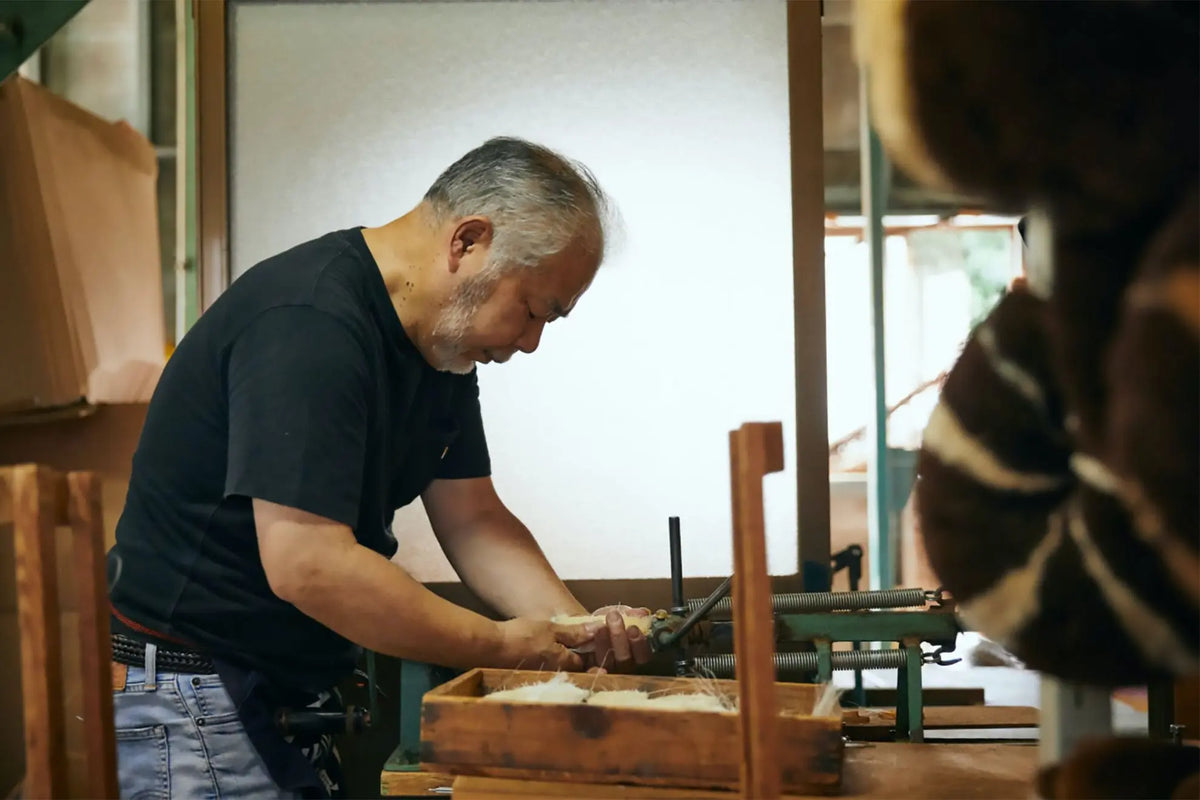
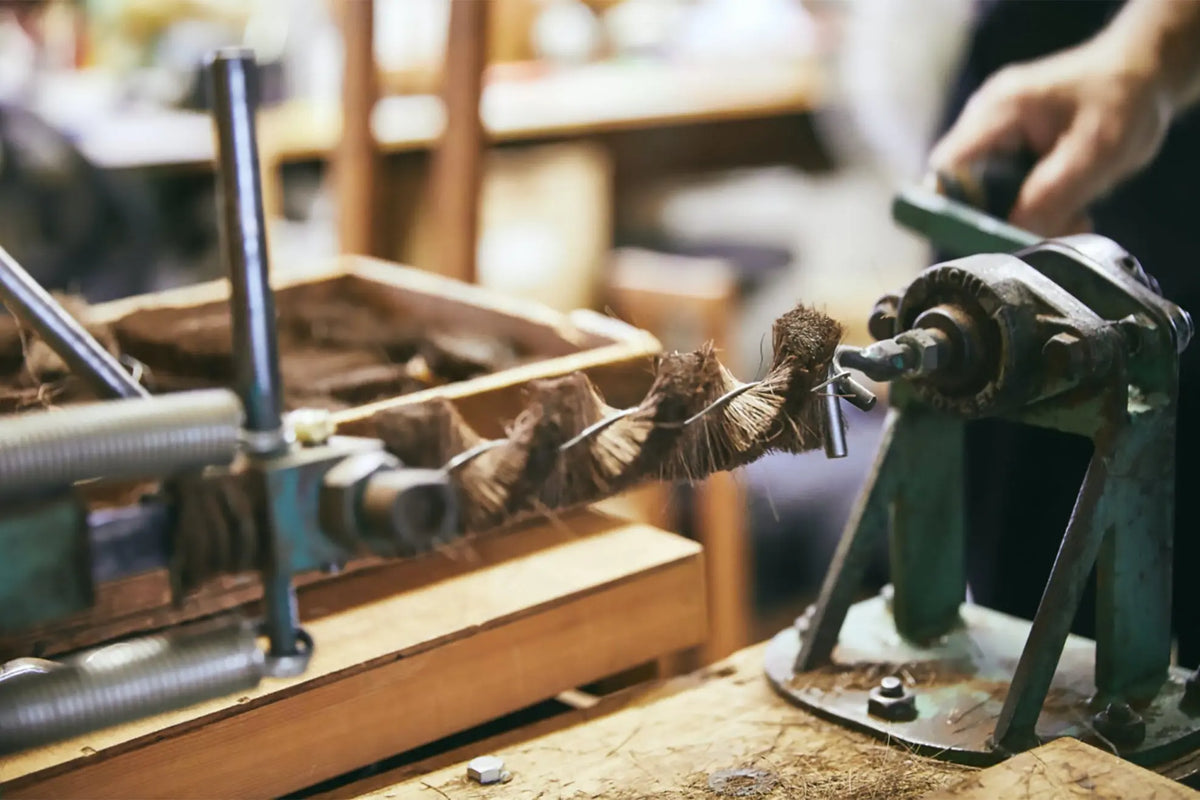
The “bō-maki” process.
Pursuing Usability with Careful Details.
The core of the brush is deliberately made with stainless steel, despite its difficulty to process. Because tawashi are used around water, this choice ensures durability against rust, resistance to deformation, and a balance of cleanliness and ease of use. Furthermore, by eliminating the side bands typical of palm tawashi, all four sides can be used. These thoughtful improvements reflect a deep awareness of the user’s daily life.

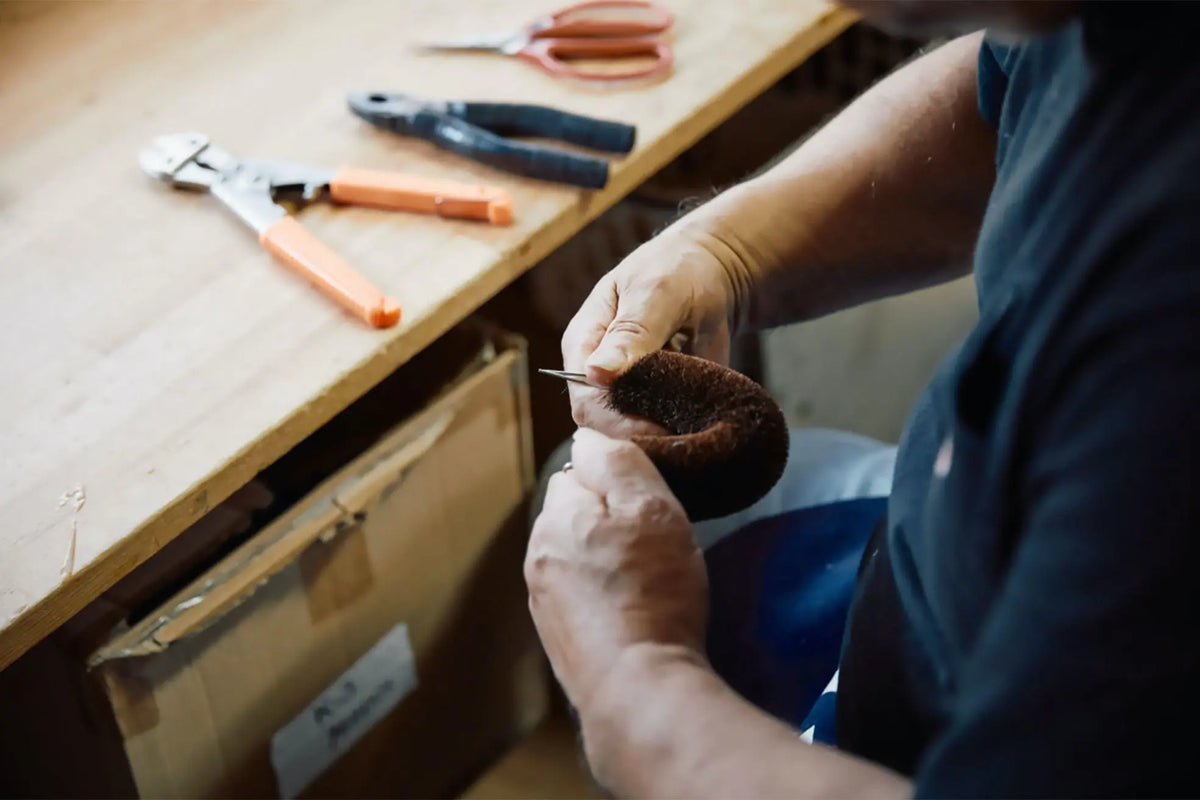
Today, Masatsumu Kitayama works alongside his eldest daughter, Hitomi, who is training as the second generation. Together, father and daughter handcraft tawashi, while the whole family collaborates on developing new products, creating brushes found nowhere else.
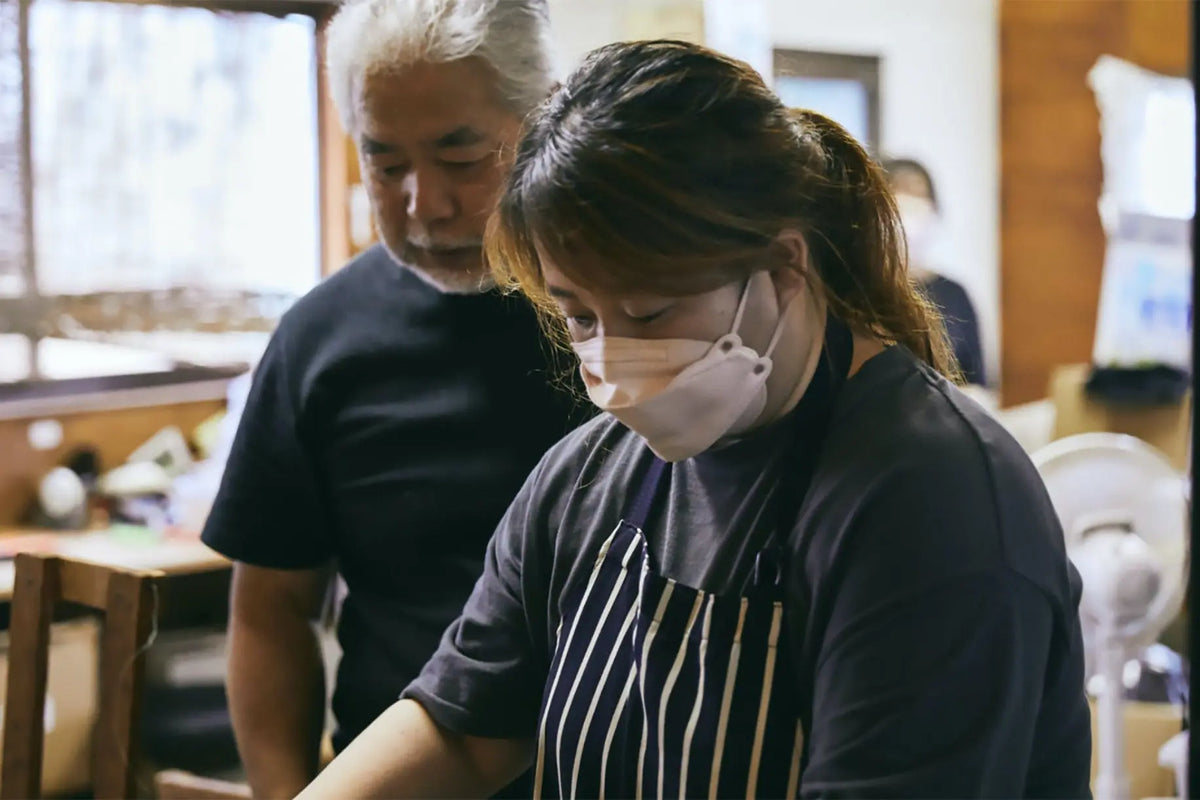
Eldest daughter Hitomi.
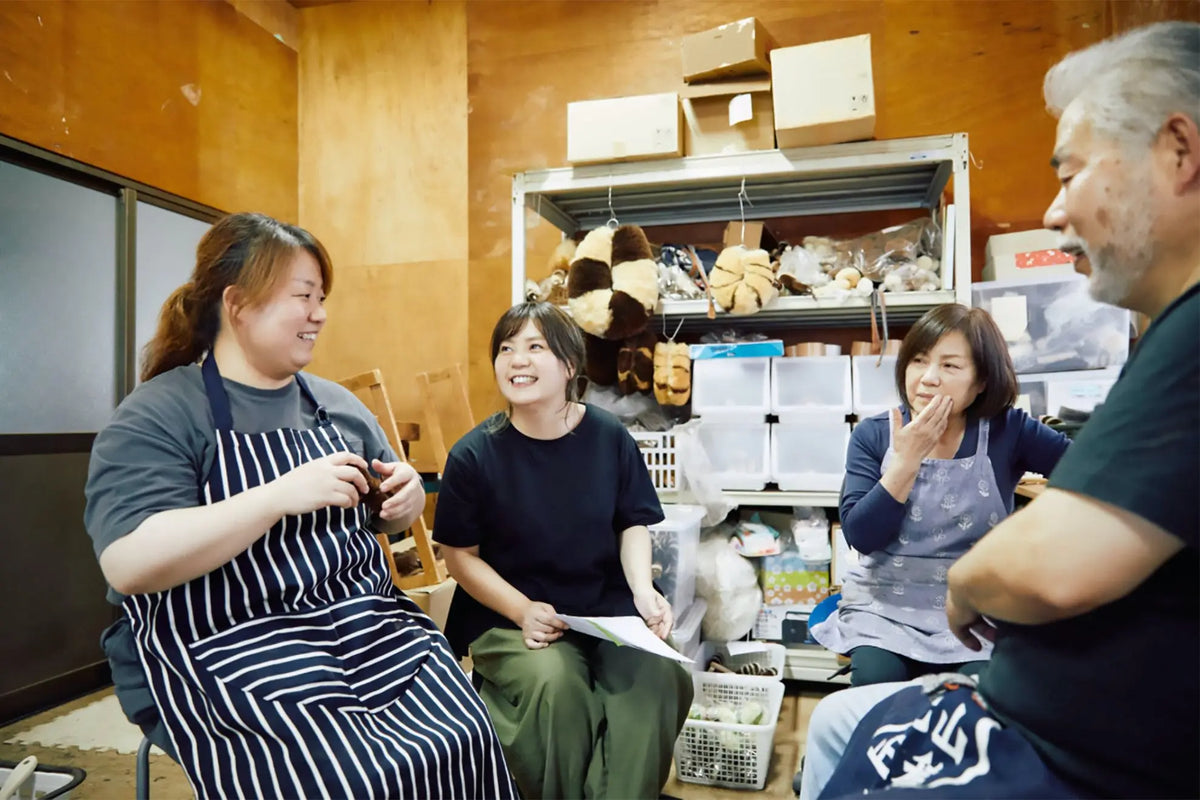
In addition, having crafted palm tawashi for many years, Kitayama has also taken steps to pass on his skills to tawashi artisans in Sri Lanka. By selling in Japan the high-quality tawashi handcrafted by Sri Lankan artisans, he hopes not only to preserve and pass down Japan’s tawashi culture but also to support the continuation of tawashi-making traditions in Sri Lanka.





